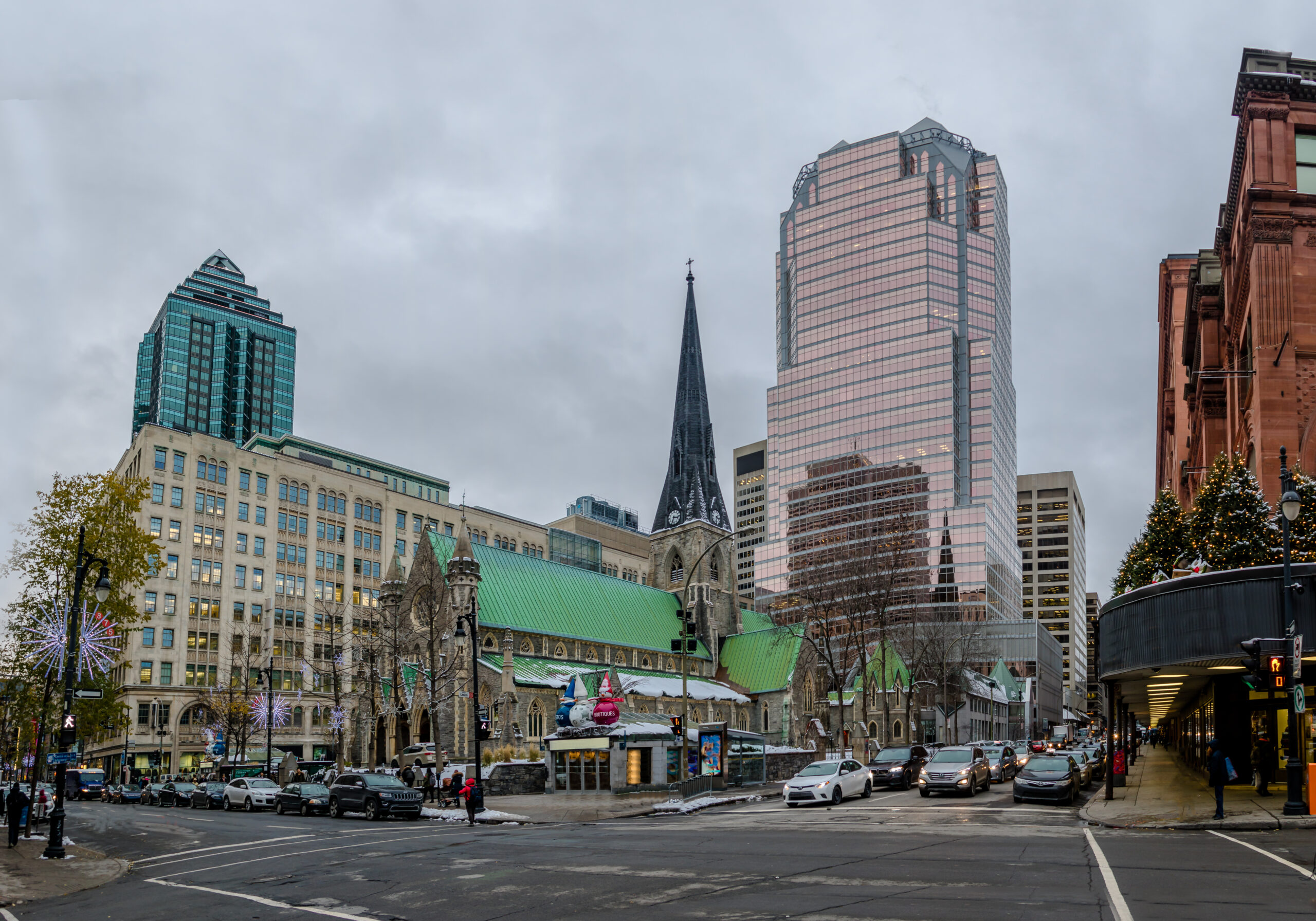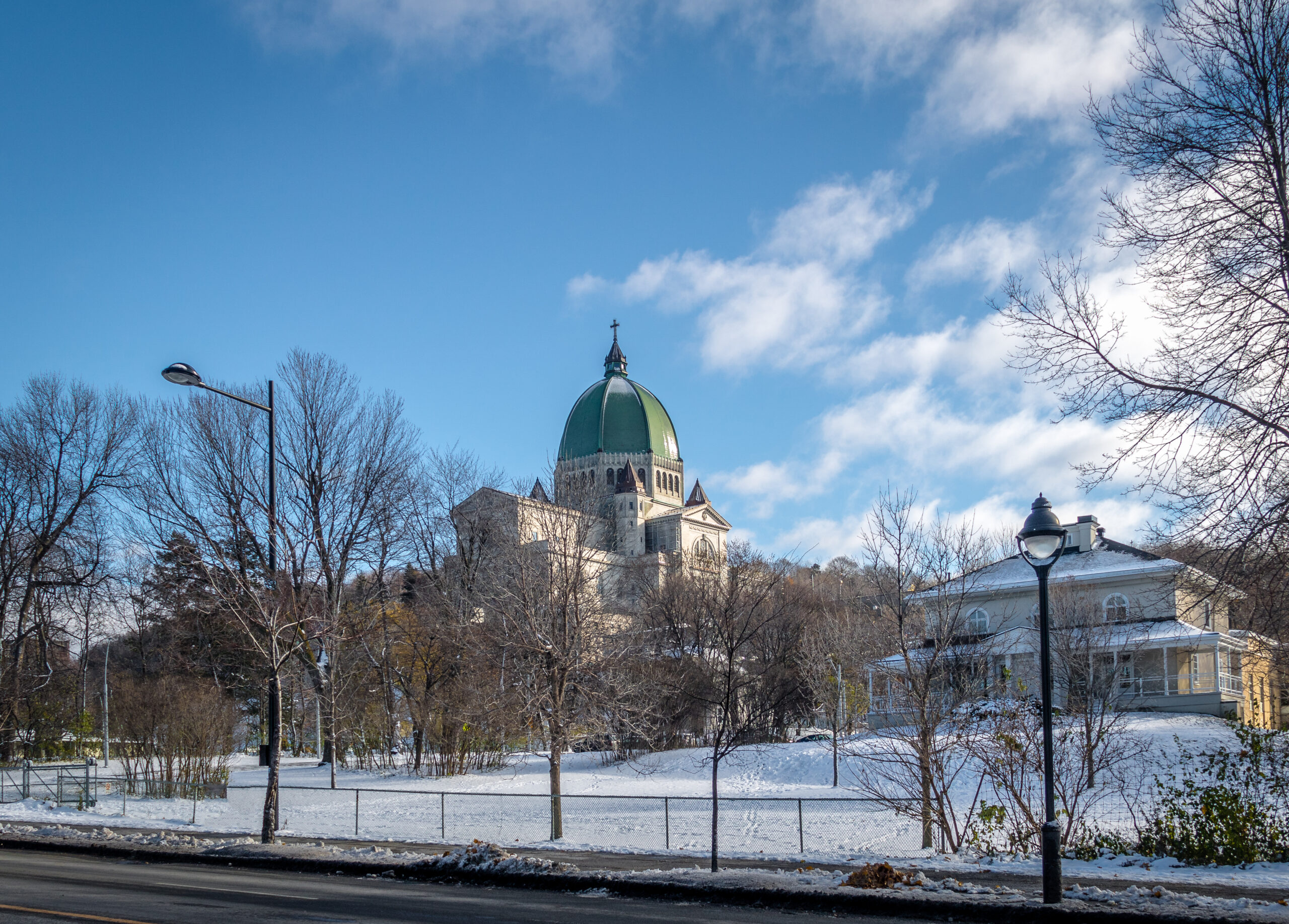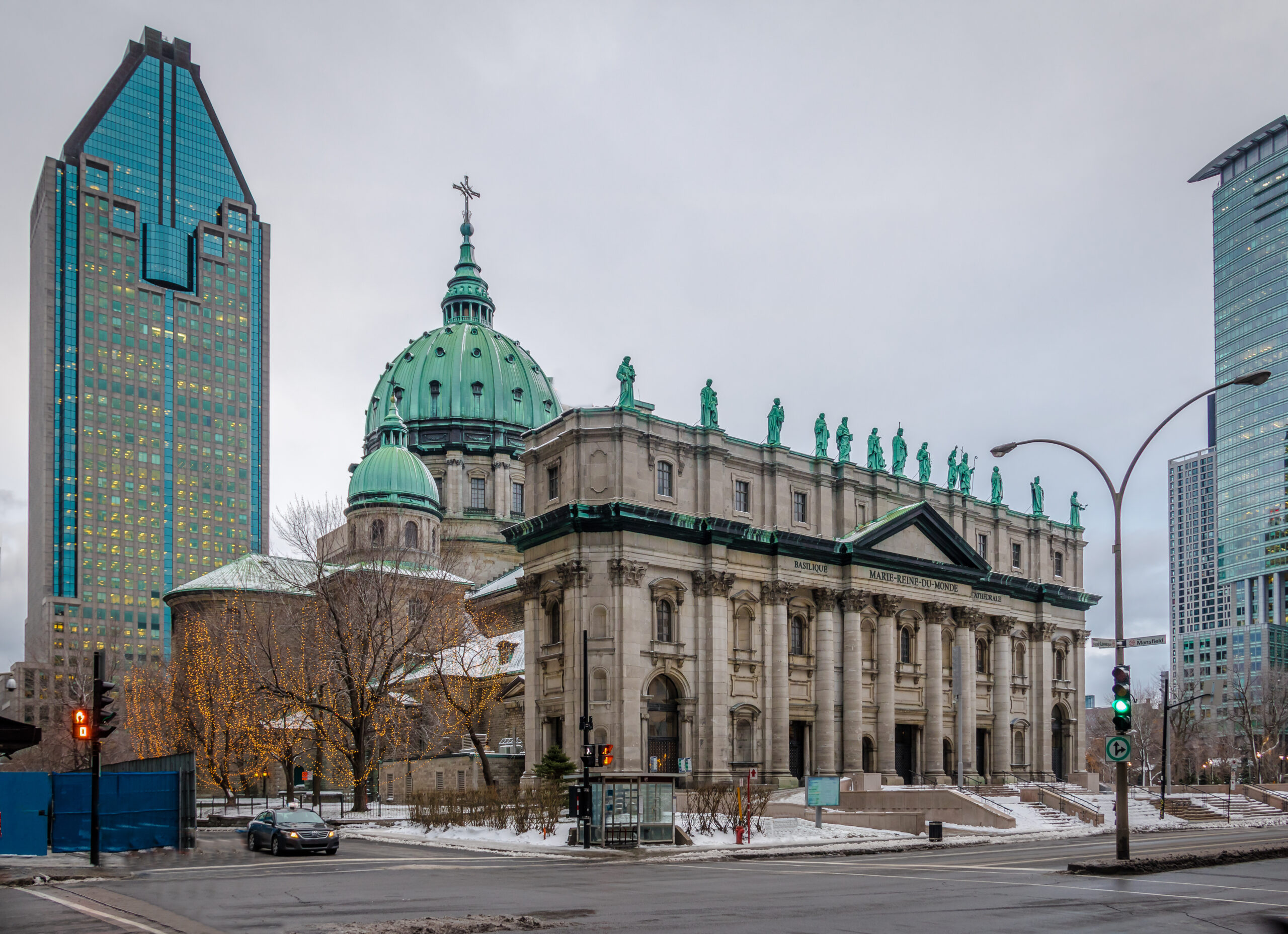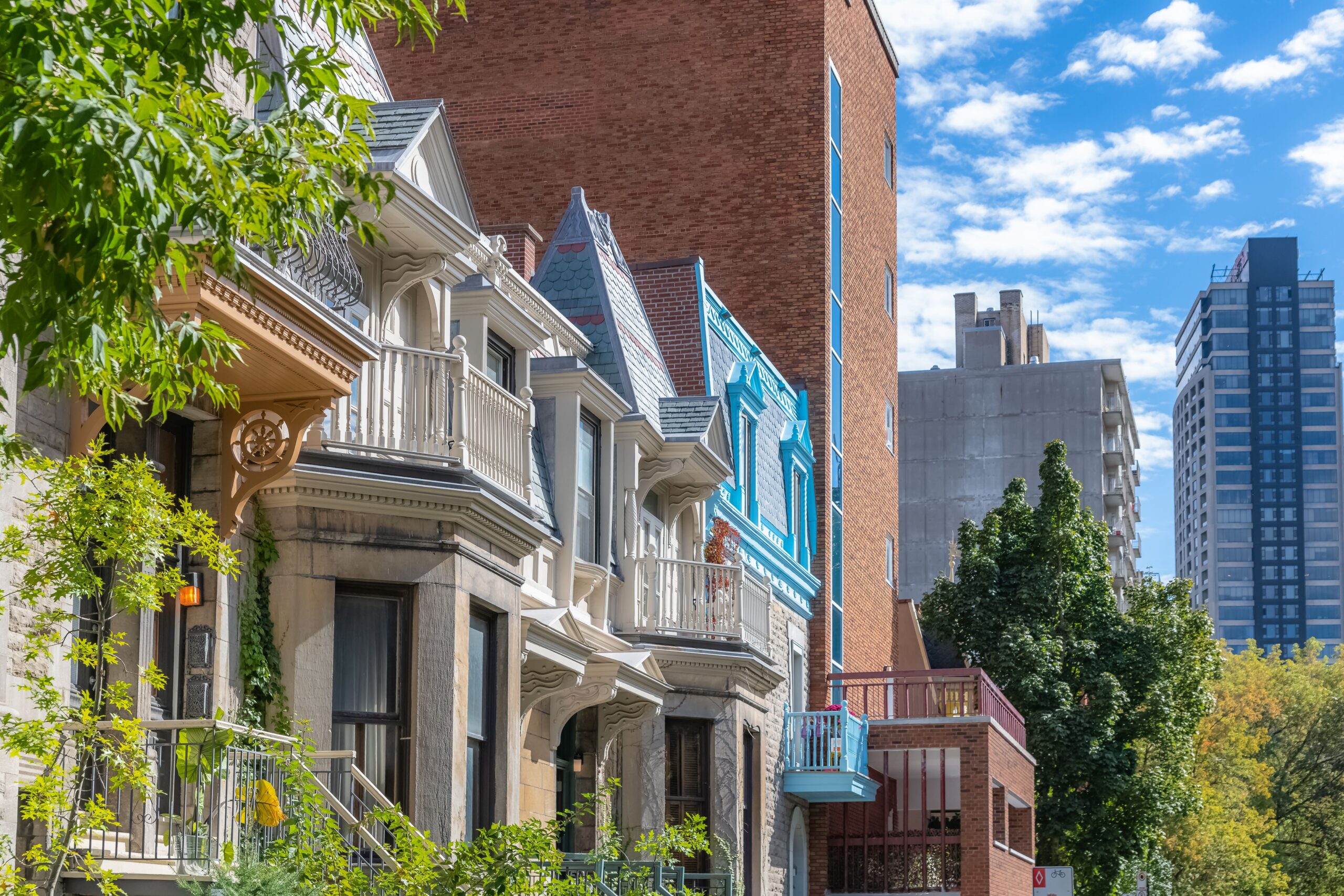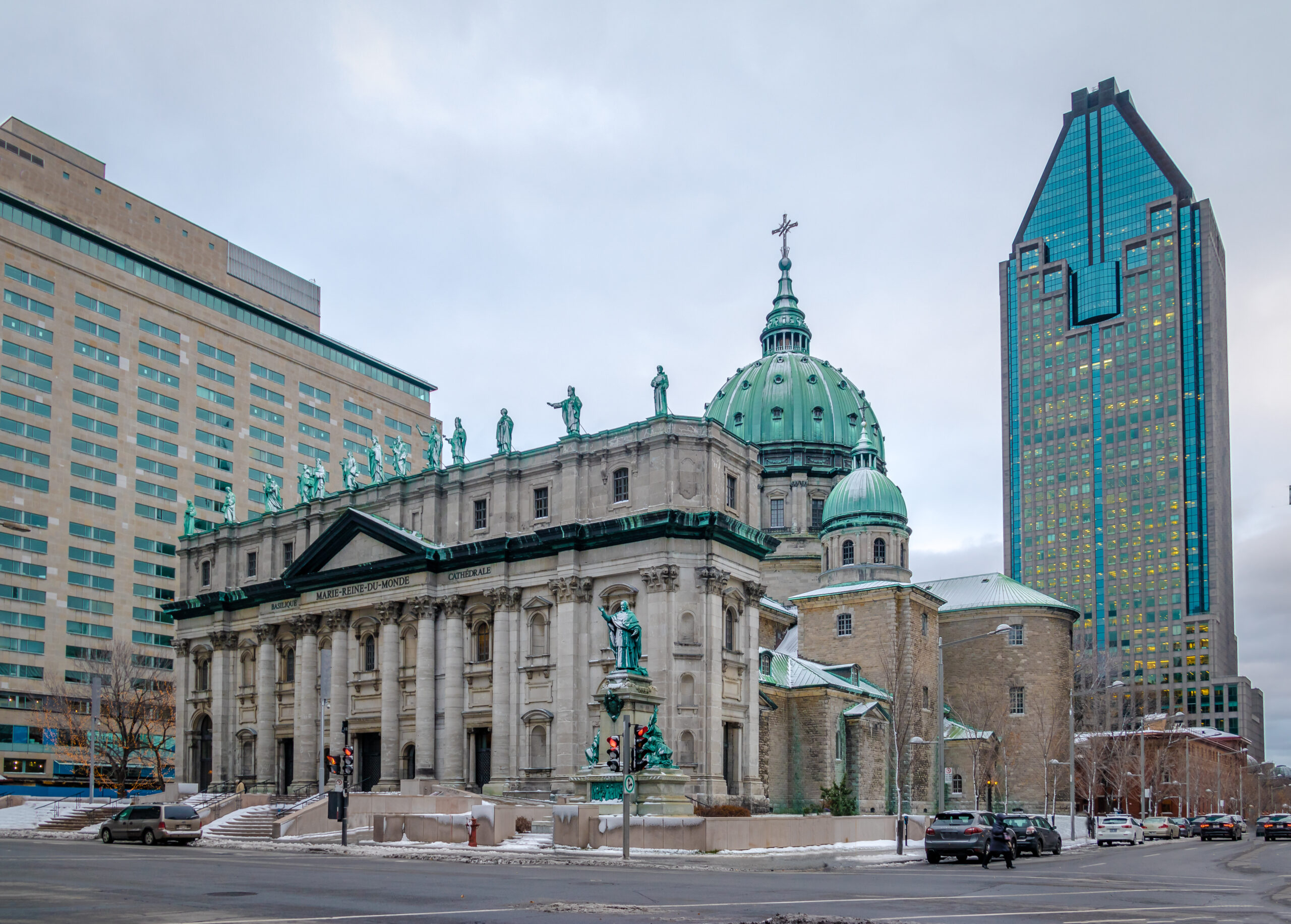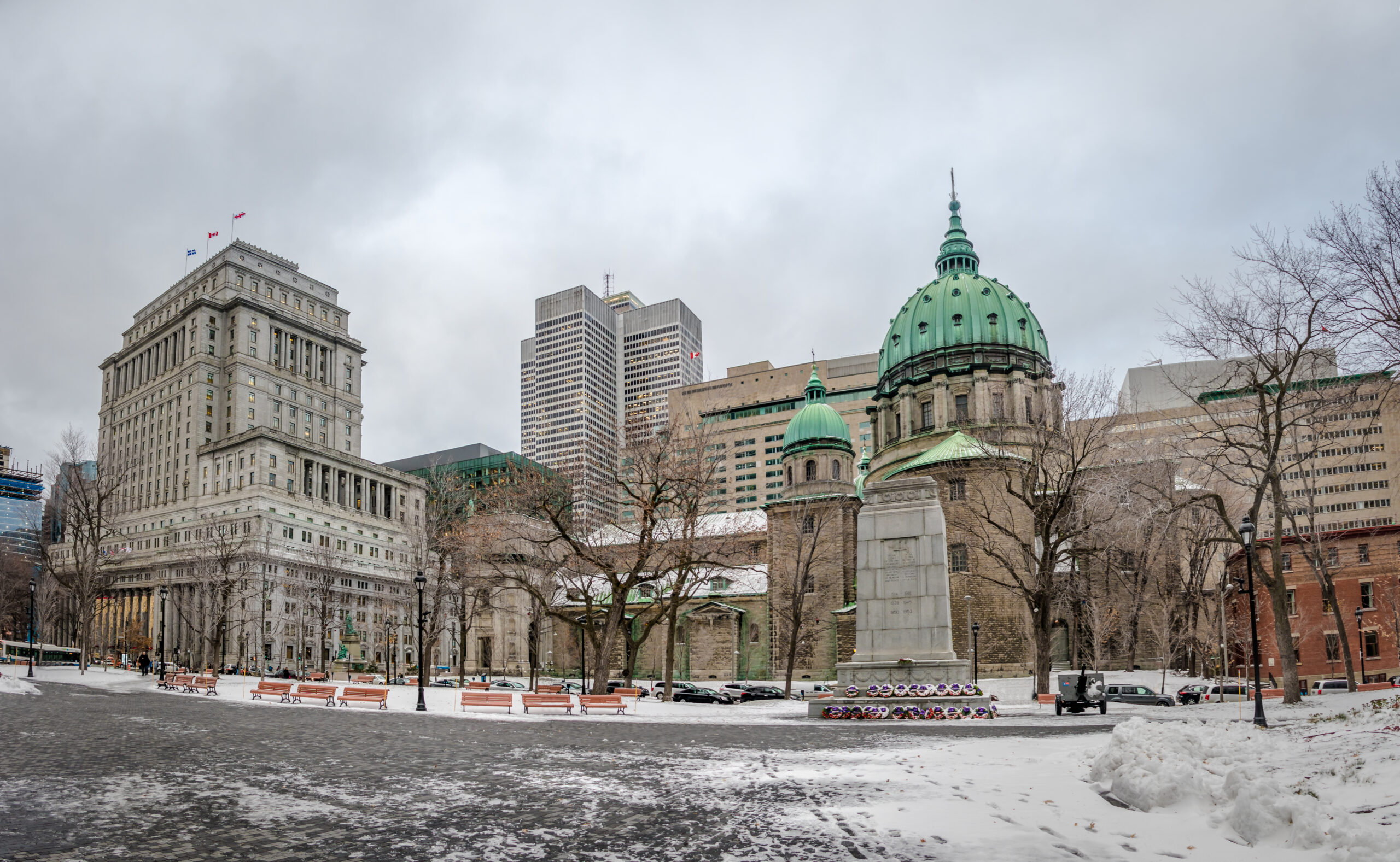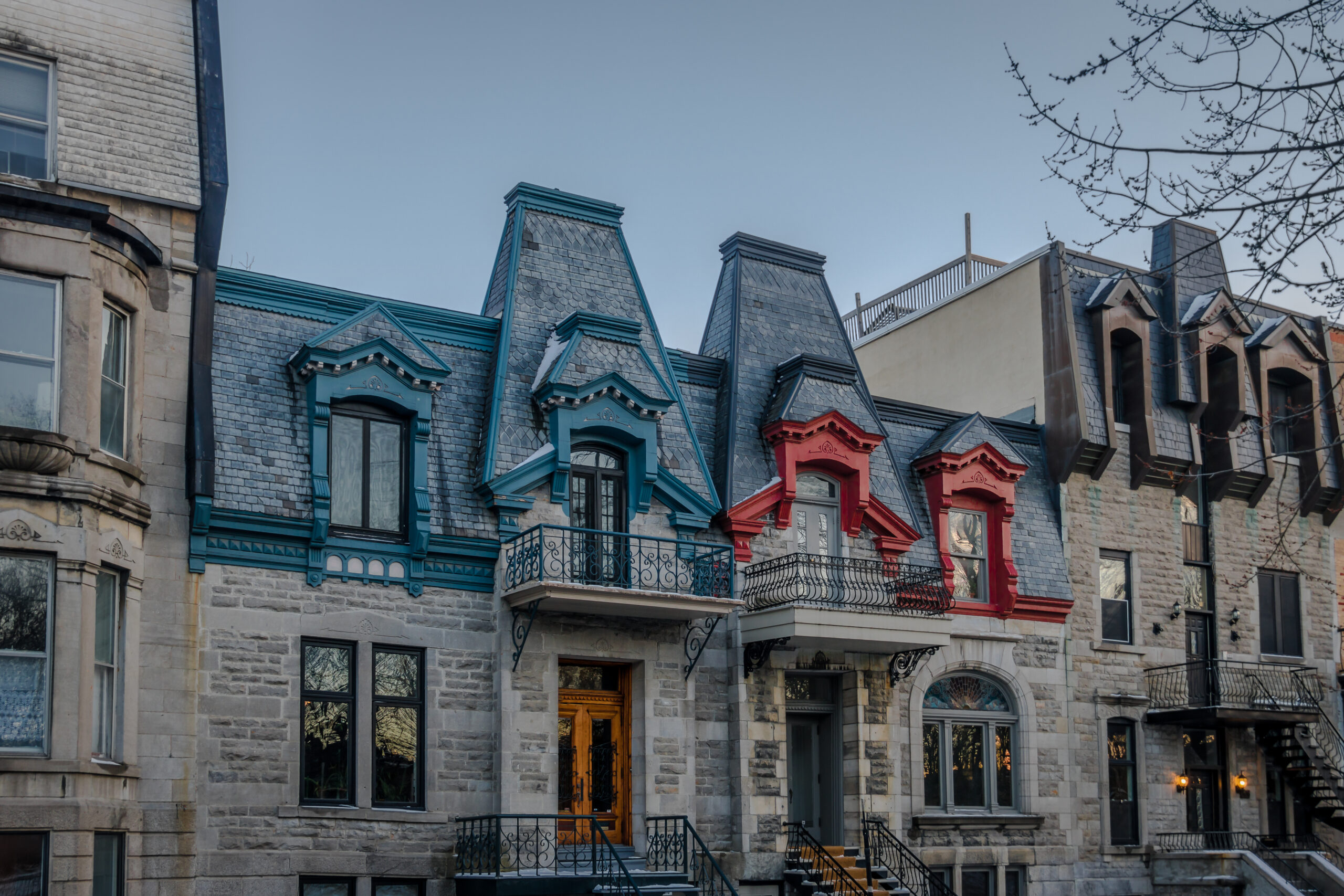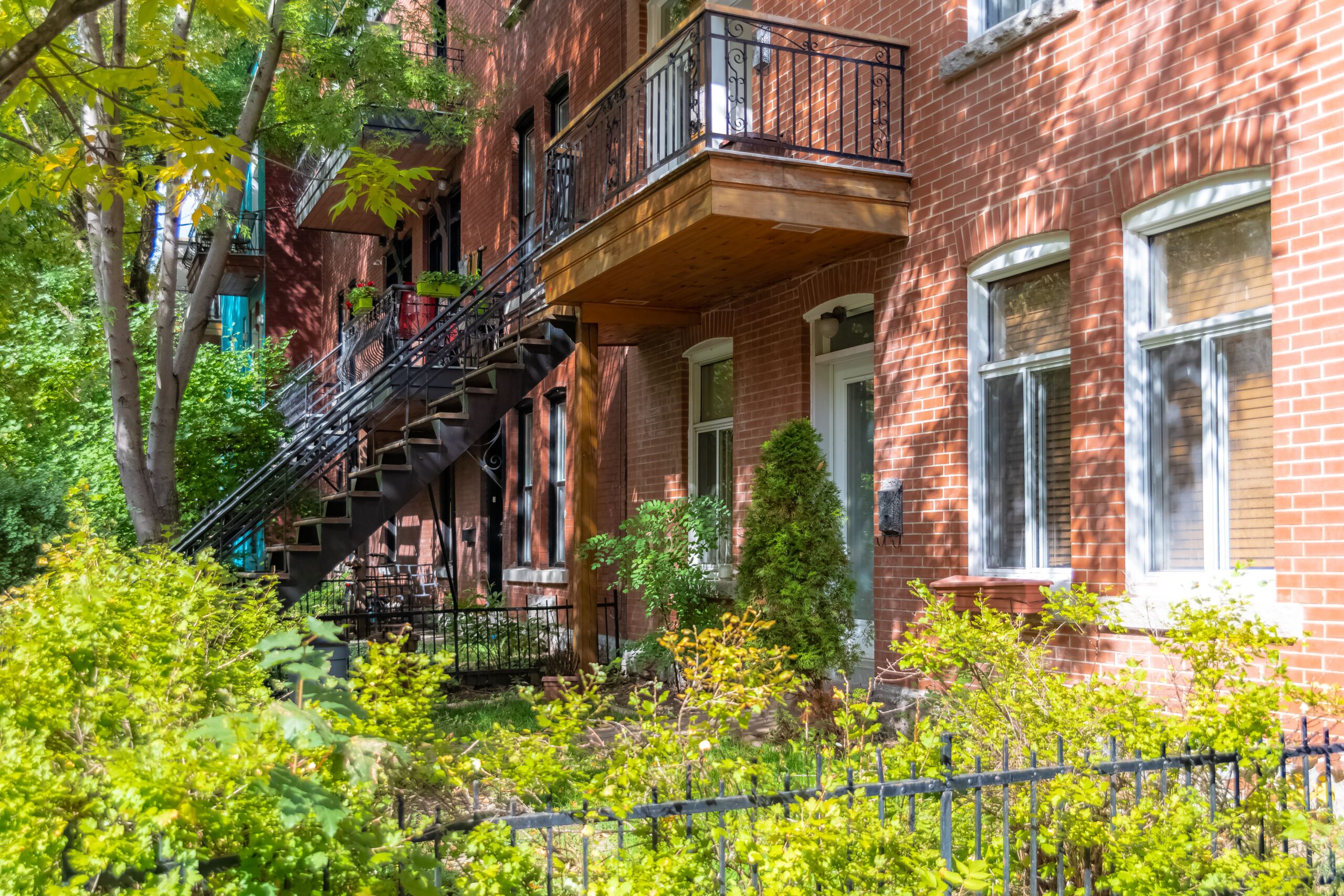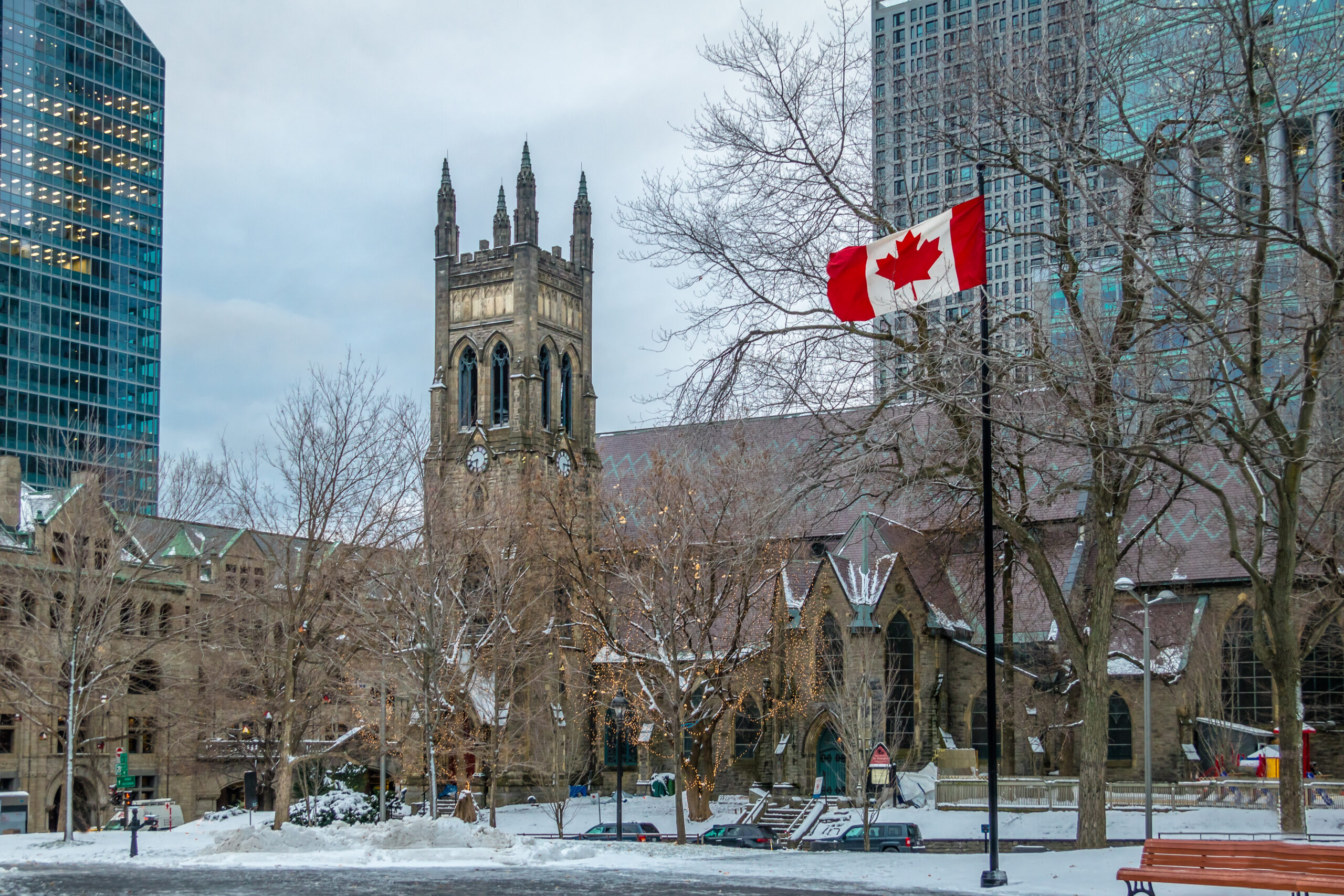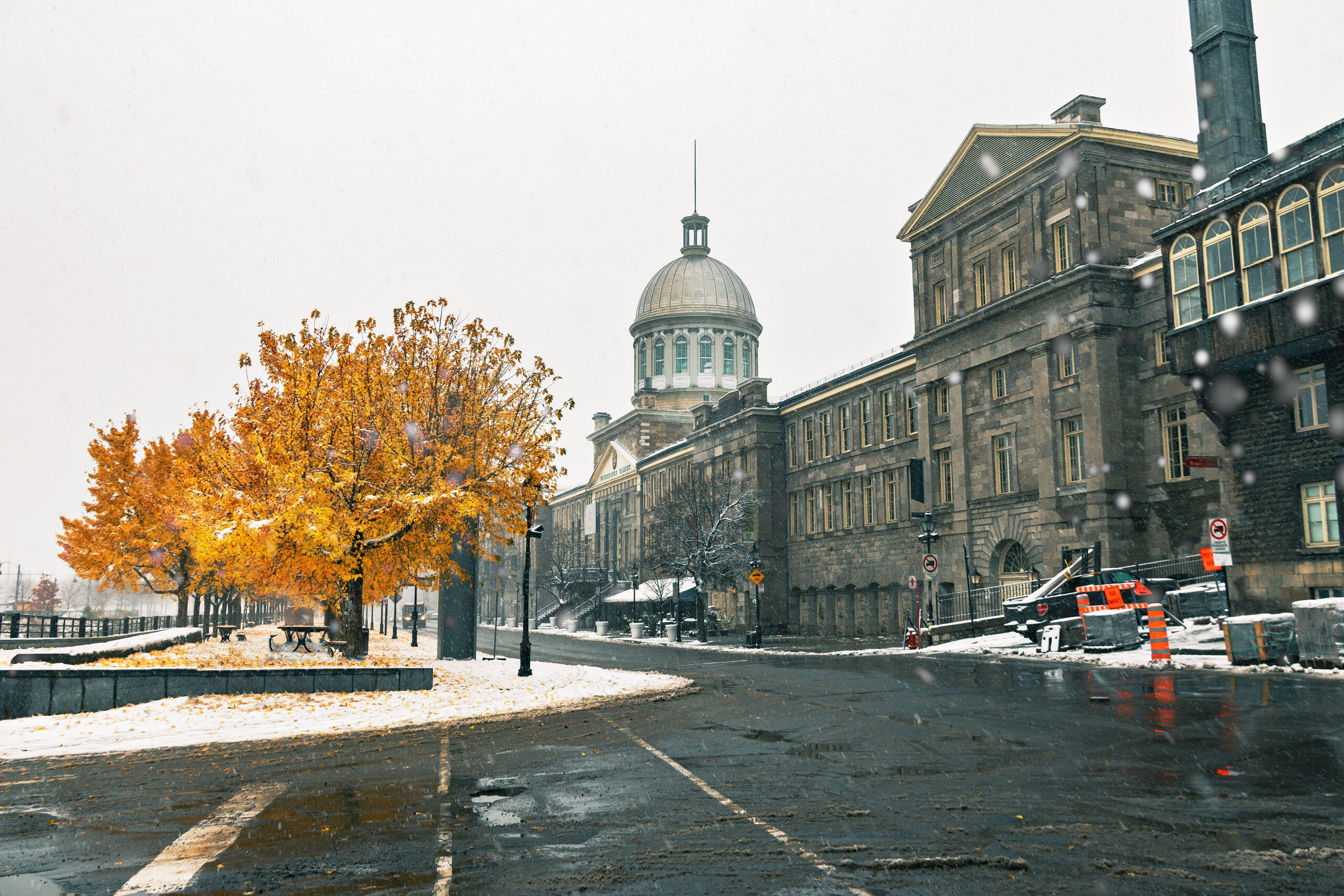Discover Montreal and Quebec: Your Ultimate Guide to History, Culture, Cuisine, and Travel Tips
Discovering Montreal: A Comprehensive Guide to Canada's Cultural Capital
Montreal, often hailed as Canada’s cultural capital, is a city where history, culture, and modernity blend seamlessly. From its rich historical roots to its vibrant neighborhoods and attractions, Montreal offers a unique experience for every visitor. In this blog, we’ll take you on a journey through the heart of Montreal, exploring its history, key areas, and practical tips for getting around.
Introduction
Welcome to Montreal, a city where old-world charm meets contemporary flair. Whether you’re a history buff, a foodie, or an urban explorer, Montreal has something for everyone. In this blog, we will delve into Montreal’s rich history, explore its most iconic neighborhoods and attractions, and provide you with essential tips on navigating the city. Get ready to uncover the magic of Montreal!
Historical Overview
The Founding and Evolution of Montreal
Montreal’s story begins in 1642 when French settlers, led by Paul Chomedey de Maisonneuve and Jeanne Mance, established Ville-Marie on the island of Montreal. Initially founded as a missionary colony, Ville-Marie quickly grew into a strategic fur trading hub due to its location along the St. Lawrence River. This advantageous position made it a focal point for trade and interaction between European settlers and Indigenous peoples.
During the 18th century, Montreal became a crucial military and economic center under French rule. The British conquest in 1760 marked a significant turning point, leading to a blend of French and British influences that are still evident in the city’s culture and architecture today.
The 19th century brought industrialization, transforming Montreal into Canada’s largest city and economic powerhouse. The construction of the Lachine Canal facilitated trade and manufacturing, attracting a diverse population of immigrants from around the world. This era also saw the development of key institutions, including McGill University and the Montreal Museum of Fine Arts.
In the 20th century, Montreal continued to grow, hosting significant events like Expo 67 and the 1976 Summer Olympics, which showcased the city on the global stage. Today, Montreal is celebrated for its multiculturalism, vibrant arts scene, and rich historical heritage.
Key Areas and Attractions
Downtown Area
Montreal’s downtown is the city’s commercial and cultural heart. Skyscrapers tower over historic buildings, creating a dynamic skyline that reflects the city’s blend of old and new. Key highlights include:
- Montreal Museum of Fine Arts: Founded in 1860, this museum is one of the most prominent in Canada, featuring a vast collection of art from around the world.
- McGill University: Established in 1821, McGill is one of Canada’s oldest and most prestigious universities, with a beautiful campus that adds to the downtown’s charm.
- Sainte-Catherine Street: This bustling shopping district offers a mix of high-end boutiques, department stores, and entertainment venues, making it a lively destination for both locals and tourists.
The Underground City
One of Montreal’s unique features is its extensive underground city, known as RÉSO. This network of interconnected tunnels stretches over 33 kilometers and links shopping centers, hotels, metro stations, and other buildings. It’s a perfect refuge during the cold winter months and a fascinating way to navigate the city. The Underground City includes notable complexes like Place Ville Marie, Complexe Desjardins, and Eaton Centre, each offering a mix of shopping, dining, and entertainment options.
Rue Crescent
Rue Crescent is synonymous with nightlife and entertainment. This lively street is lined with bars, restaurants, and clubs, attracting locals and tourists alike. It’s a hotspot during the Grand Prix weekend and offers a taste of Montreal’s vibrant social scene. Highlights include:
- Hurley’s Irish Pub: A beloved spot offering a cozy atmosphere and live music.
- Sir Winston Churchill Pub: A multi-level bar and nightclub with a lively dance floor.
- Kampai Garden: A trendy eatery known for its innovative cocktails and Asian-inspired dishes.
Vieux-Montréal (Old Montreal)
Stepping into Old Montreal is like traveling back in time. Cobblestone streets, historic buildings, and the stunning Notre-Dame Basilica define this charming district. Key attractions include:
- Notre-Dame Basilica: Completed in 1829, this Gothic Revival masterpiece features stunning stained glass windows and a grand interior.
- Old Port: Once a bustling commercial port, this area has been transformed into a recreational space with parks, cultural events, and the Montreal Science Centre.
- Pointe-à-Callière Museum: This archaeology and history museum offers insights into Montreal’s past, with exhibits ranging from Indigenous cultures to contemporary history.
Latin Quarter
The Latin Quarter is a lively neighborhood known for its bohemian atmosphere. It’s home to the Université du Québec à Montréal (UQAM), theaters, and eclectic eateries. This area comes alive during festivals and is a great spot for experiencing Montreal’s artistic and intellectual vibe. Notable spots include:
- Théâtre Saint-Denis: A historic theater hosting a variety of performances, from comedy shows to concerts.
- Saint Louis Square: A picturesque park surrounded by Victorian houses, perfect for a leisurely stroll.
Plateau Mont-Royal
Plateau Mont-Royal is one of Montreal’s most iconic neighborhoods, known for its colorful murals, charming streets, and hip atmosphere. Highlights include:
- Boulevard Saint-Laurent: Often referred to as “The Main,” this street is a cultural melting pot with diverse restaurants, shops, and nightlife.
- Parc Lafontaine: A beautiful urban park with walking paths, ponds, and picnic areas.
- Schwartz’s Deli: An iconic deli famous for its smoked meat sandwiches, a must-visit for foodies.
Rue Prince Arthur and Duluth
Rue Prince Arthur and Duluth are pedestrian-friendly streets that offer a delightful mix of restaurants and shops. These areas are perfect for a leisurely stroll, allowing visitors to enjoy outdoor dining and the vibrant street life. Key spots include:
- Juliette & Chocolat: A dessert haven offering decadent chocolate treats and crepes.
- La Banquise: Known for its variety of poutines, a quintessential Quebec dish.
Parks
Montreal boasts numerous green spaces that provide a respite from urban life. Key parks include:
- Mount Royal Park: Designed by Frederick Law Olmsted, this park offers hiking trails, lookout points, and a serene environment in the heart of the city.
- Parc Jean-Drapeau: Located on Île Sainte-Hélène, this park hosts major events like the Osheaga music festival and provides recreational activities like biking and swimming.
Montreal Chinatown
Montreal’s Chinatown is a cultural gem, offering a rich culinary experience with its array of restaurants and bakeries. Visitors can explore traditional Chinese shops and enjoy festivals that celebrate Asian culture. Notable spots include:
- Pho Bang New York: A popular spot for delicious pho and Vietnamese dishes.
- La Maison Kam Fung: Renowned for its dim sum and traditional Chinese cuisine.
The Gay Village
The Gay Village is one of the largest LGBTQ+ districts in North America. It’s a vibrant area with colorful murals, lively nightlife, and a welcoming atmosphere. During the summer, Sainte-Catherine Street is transformed into a pedestrian zone, making it a bustling and inclusive space for all. Key attractions include:
- Sky Complex: A multi-level club with a rooftop terrace offering stunning views of the city.
- Cabaret Mado: A popular drag cabaret showcasing the talents of local performers.
Île Sainte-Hélène
Île Sainte-Hélène is a recreational haven, home to attractions like:
- La Ronde: An amusement park with thrilling rides and entertainment for all ages.
- Biosphere: An environmental museum housed in a striking geodesic dome, originally built for Expo 67.
- Parc Jean-Drapeau: Offers various outdoor activities, including hiking, biking, and swimming.
Transportation
Navigating Montreal is a breeze thanks to its efficient public transportation system. The STM (Société de transport de Montréal) operates buses and the metro, providing comprehensive coverage of the city. Key tips include:
- Metro: The metro system has four lines (green, orange, yellow, and blue) that connect major neighborhoods and attractions.
- Buses: Buses complement the metro system, offering routes to areas not covered by the metro.
- Biking: Montreal is bike-friendly, with numerous bike paths and a bike-sharing system called BIXI. Cycling along the Lachine Canal and through Mount Royal Park are popular activities.
- Walking: Many of Montreal’s neighborhoods are highly walkable, allowing visitors to explore the city at a leisurely pace.
Conclusion
Montreal is a city that captivates and inspires. From its historical roots to its modern attractions, there is always something new to discover. Whether you’re here for a short visit or a longer stay, Montreal promises an unforgettable experience. So pack your bags, and get ready to explore the wonders of Montreal!
Feel free to share this blog with fellow travelers and anyone interested in discovering the charm of Montreal. Safe travels!
Fifteen Beloved and Original Quebecois Recipes
1. Tourtière (Meat Pie)
History
Tourtière is a traditional Quebecois meat pie served during the Christmas season and New Year’s Eve. Its origins date back to the 17th century, and it is a staple in Quebecois holiday feasts.
Ingredients
- 1 lb ground pork
- 1 lb ground veal
- 1 onion, finely chopped
- 2 cloves garlic, minced
- 1/2 cup beef broth
- 1/4 tsp ground cinnamon
- 1/4 tsp ground cloves
- 1/4 tsp ground allspice
- 1/2 tsp salt
- 1/4 tsp pepper
- 2 pie crusts
- 1 egg, beaten
Instructions
- In a large skillet, cook the pork and veal over medium heat until browned.
- Add the onion and garlic, cooking until softened.
- Stir in the beef broth, cinnamon, cloves, allspice, salt, and pepper. Simmer for 15 minutes.
- Preheat the oven to 375°F (190°C).
- Line a pie plate with one crust. Fill with the meat mixture and cover with the second crust.
- Seal the edges and cut slits in the top crust. Brush with beaten egg.
- Bake for 45 minutes or until the crust is golden brown.
Tips
- Serve with ketchup or a cranberry sauce for added flavor.
- For a variation, add diced potatoes to the meat mixture.
Cultural Note
Tourtière is often accompanied by family gatherings, music, and celebrations, embodying the spirit of Quebecois hospitality and tradition.
2. Poutine
History
Poutine is perhaps the most famous Quebecois dish, originating in rural Quebec in the late 1950s. It has since become a symbol of Quebecois cuisine and culture.
Ingredients
- 4 large russet potatoes, peeled and cut into fries
- 2 cups cheese curds
- 2 cups beef or chicken gravy
- Vegetable oil for frying
- Salt to taste
Instructions
- Heat oil in a deep fryer or large pot to 350°F (175°C).
- Fry the potatoes until golden and crispy. Drain on paper towels and season with salt.
- Heat the gravy until hot.
- Place fries on a plate, top with cheese curds, and pour hot gravy over the top.
Tips
- Use fresh cheese curds that squeak when bitten for the best texture.
- For variations, add pulled pork or bacon.
Cultural Note
Poutine is enjoyed by Quebecois of all ages and is a common late-night snack, often found in diners and fast-food restaurants across Quebec.
3. Cipâte (Layered Meat Pie)
History
Cipâte is a layered meat pie from the Saguenay–Lac-Saint-Jean region of Quebec. It is traditionally made with multiple types of meat and is slow-cooked for several hours.
Ingredients
- 1 lb pork shoulder, cubed
- 1 lb chicken thighs, cubed
- 1 lb beef stew meat, cubed
- 1 onion, chopped
- 2 cups diced potatoes
- 3 cups chicken broth
- 1/4 tsp ground allspice
- Salt and pepper to taste
- 3 pie crusts
Instructions
- Preheat oven to 300°F (150°C).
- In a large pot, layer the meats, onions, and potatoes.
- Season each layer with allspice, salt, and pepper.
- Pour the chicken broth over the top.
- Cover with the pie crusts, sealing the edges.
- Bake for 4-5 hours, until the meat is tender and the crust is golden.
Tips
- Serve with pickles or a green salad.
- Use a mix of meats for a richer flavor.
Cultural Note
Cipâte is a hearty dish that reflects the resourcefulness of Quebecois cooks, who used available meats and preserved foods to create this flavorful pie.
4. Ragoût de Pattes de Cochon (Pork Hock Stew)
History
This rich and savory stew is a holiday favorite in Quebec, traditionally served at Christmas. It features tender pork hocks simmered in a spiced gravy.
Ingredients
- 4 pork hocks
- 1 onion, chopped
- 3 cloves garlic, minced
- 2 cups chicken broth
- 1/4 tsp ground cloves
- 1/4 tsp ground cinnamon
- 1/4 tsp ground allspice
- 1/2 cup flour
- Salt and pepper to taste
Instructions
- In a large pot, brown the pork hocks on all sides.
- Add the onion and garlic, cooking until softened.
- Pour in the chicken broth and add the spices. Bring to a boil.
- Reduce heat, cover, and simmer for 2-3 hours until the pork is tender.
- Remove the pork hocks and set aside.
- Mix the flour with a small amount of water to form a paste. Stir into the broth to thicken.
- Return the pork hocks to the pot and simmer for 15 more minutes.
Tips
- Serve with mashed potatoes or crusty bread.
- For a variation, add carrots and potatoes to the stew.
Cultural Note
Ragoût de Pattes de Cochon is often served alongside tourtière, making it a central part of Quebecois Christmas feasts.
5. Pouding Chômeur (Poor Man’s Pudding)
History
Pouding Chômeur was created during the Great Depression in Quebec. It’s a simple yet delicious dessert made with pantry staples like flour, sugar, and syrup.
Ingredients
- 1 cup flour
- 1 tsp baking powder
- 1/2 cup sugar
- 1/2 cup milk
- 1/4 cup butter, melted
- 1 cup maple syrup
- 1 cup water
Instructions
- Preheat oven to 350°F (175°C).
- In a bowl, mix flour, baking powder, and sugar.
- Stir in milk and melted butter until smooth.
- Pour batter into a greased baking dish.
- In a saucepan, bring maple syrup and water to a boil. Pour over the batter.
- Bake for 40-45 minutes until golden and bubbly.
Tips
- Serve warm with vanilla ice cream.
- For a variation, add a sprinkle of cinnamon to the batter.
Cultural Note
Pouding Chômeur is a testament to the ingenuity of Quebecois cooks, who turned simple ingredients into a beloved dessert.
6. Soupe aux Pois (Pea Soup)
History
Pea soup is a classic Quebecois dish, traditionally made with dried yellow peas, ham hocks, and vegetables. It’s a hearty soup perfect for cold winter days.
Ingredients
- 2 cups dried yellow peas, soaked overnight
- 1 ham hock
- 1 onion, chopped
- 2 carrots, diced
- 2 celery stalks, diced
- 8 cups water
- 1 bay leaf
- Salt and pepper to taste
Instructions
- In a large pot, combine the soaked peas, ham hock, onion, carrots, celery, water, and bay leaf.
- Bring to a boil, then reduce heat and simmer for 2-3 hours until the peas are tender.
- Remove the ham hock, chop the meat, and return it to the pot.
- Season with salt and pepper.
Tips
- Serve with crusty bread.
- For a creamier texture, blend part of the soup before serving.
Cultural Note
Soupe aux Pois is often enjoyed during family gatherings, symbolizing warmth and comfort in Quebecois homes.
7. Tarte au Sucre (Sugar Pie)
History
Sugar pie is a traditional Quebecois dessert made with brown sugar, cream, and flour. It has a sweet, caramel-like flavor and is a favorite at holiday celebrations.
Ingredients
- 1 unbaked pie crust
- 1 cup brown sugar
- 1 cup heavy cream
- 2 tbsp flour
- 1 tsp vanilla extract
Instructions
- Preheat oven to 350°F (175°C).
- In a bowl, whisk together brown sugar, cream, flour, and vanilla until smooth.
- Pour the mixture into the pie crust.
- Bake for 45-50 minutes until the filling is set.
Tips
- Serve with whipped cream or vanilla ice cream.
- For a variation, add a pinch of cinnamon or nutmeg to the filling.
Cultural Note
Tarte au Sucre is a staple in Quebecois bakeries and homes, often enjoyed during festive occasions and family gatherings.
8. Bûche de Noël (Yule Log)
History
The Bûche de Noël is a traditional Christmas dessert in Quebec, reflecting French culinary influence. It’s a rolled sponge cake filled with cream and decorated to resemble a log.
Ingredients
- 4 eggs, separated
- 1/2 cup sugar
- 1/3 cup flour
- 1/4 cup cocoa powder
- 1 tsp vanilla extract
- 1 cup heavy cream
- 2 tbsp powdered sugar
- Chocolate ganache or frosting
Instructions
- Preheat oven to 375°F (190°C). Line a jelly roll pan with parchment paper.
- Beat egg yolks and sugar until thick and pale. Stir in flour, cocoa powder, and vanilla.
- In a separate bowl, beat egg whites until stiff peaks form. Fold into the batter.
- Spread the batter evenly in the pan and bake for 12-15 minutes.
- Invert the cake onto a towel dusted with powdered sugar. Roll up and let cool.
- Whip the cream with powdered sugar until stiff. Unroll the cake, spread with cream, and roll up again.
- Cover with chocolate ganache or frosting and decorate as desired.
Tips
- Chill the cake before serving for easier slicing.
- For a festive touch, decorate with meringue mushrooms or powdered sugar snow.
Cultural Note
The Bûche de Noël is a highlight of Quebecois Christmas feasts, symbolizing the warmth and cheer of the holiday season.
9. Cretons (Pork Spread)
History
Cretons is a traditional Quebecois pork spread served as a breakfast or snack. It has a pâté-like texture and is typically spread on toast or bread.
Ingredients
- 1 lb ground pork
- 1 onion, finely chopped
- 2 cloves garlic, minced
- 1 cup milk
- 1/2 cup bread crumbs
- 1/4 tsp ground cloves
- 1/4 tsp ground cinnamon
- Salt and pepper to taste
Instructions
- In a pot, combine the pork, onion, garlic, and milk. Cook over medium heat until the pork is no longer pink.
- Stir in bread crumbs, cloves, cinnamon, salt, and pepper.
- Reduce heat and simmer, stirring occasionally, until thickened (about 1 hour).
- Transfer to a container and refrigerate until set.
Tips
- Serve with mustard or pickles for added flavor.
- For a smoother texture, blend the mixture before chilling.
Cultural Note
Cretons is a breakfast staple in Quebecois households, often enjoyed with a hot cup of coffee.
10. Tarte à la Farine Grillée (Toasted Flour Pie)
History
Tarte à la Farine Grillée is a unique Quebecois dessert featuring toasted flour, which gives it a distinctive flavor and texture.
Ingredients
- 1 unbaked pie crust
- 1 cup toasted flour
- 1 cup brown sugar
- 2 cups milk
- 1/2 cup butter
- 1 tsp vanilla extract
Instructions
- Preheat oven to 350°F (175°C).
- In a saucepan, melt the butter and stir in the toasted flour.
- Gradually add the milk, stirring constantly until thickened.
- Add brown sugar and vanilla, stirring until smooth.
- Pour the mixture into the pie crust.
- Bake for 45 minutes until set.
Tips
- Serve chilled or at room temperature.
- For added flavor, top with whipped cream or fresh berries.
Cultural Note
This pie showcases the creativity of Quebecois cooks, who developed this dessert using simple, everyday ingredients.
11. Ragoût de Boulettes (Meatball Stew)
History
Ragoût de Boulettes is a comforting Quebecois dish made with spiced meatballs simmered in a rich gravy. It’s a popular holiday dish, often served with mashed potatoes.
Ingredients
- 1 lb ground pork
- 1/2 cup bread crumbs
- 1 egg
- 1 onion, finely chopped
- 1/4 tsp ground cloves
- 1/4 tsp ground allspice
- Salt and pepper to taste
- 2 cups beef broth
- 1/4 cup flour
Instructions
- In a bowl, mix the pork, bread crumbs, egg, onion, cloves, allspice, salt, and pepper. Form into meatballs.
- In a large pot, brown the meatballs on all sides. Remove and set aside.
- Stir the flour into the drippings to form a roux. Gradually add the beef broth, stirring until thickened.
- Return the meatballs to the pot and simmer for 30 minutes.
Tips
- Serve over mashed potatoes or rice.
- For a variation, add carrots and peas to the stew.
Cultural Note
Ragoût de Boulettes is a favorite at family gatherings and holiday feasts, embodying the warmth and tradition of Quebecois cuisine.
12. Paté Chinois (Shepherd’s Pie)
History
Paté Chinois, despite its name, is a Quebecois version of shepherd’s pie. It’s a layered casserole with ground beef, creamed corn, and mashed potatoes.
Ingredients
- 1 lb ground beef
- 1 onion, chopped
- 2 cans creamed corn
- 4 cups mashed potatoes
- Salt and pepper to taste
Instructions
- Preheat oven to 350°F (175°C).
- In a skillet, cook the ground beef and onion until browned. Season with salt and pepper.
- Spread the beef mixture in a baking dish. Top with creamed corn.
- Spread the mashed potatoes over the corn.
- Bake for 30 minutes until the top is golden.
Tips
- Serve with pickled beets or a green salad.
- For added flavor, mix cheese into the mashed potatoes.
Cultural Note
Paté Chinois is a beloved comfort food in Quebec, often enjoyed as a weeknight meal or at potlucks.
13. Pain Doré (French Toast)
History
Pain Doré, or French toast, is a popular Quebecois breakfast dish. It’s made by soaking bread in a mixture of eggs and milk, then frying until golden.
Ingredients
- 4 slices of bread
- 2 eggs
- 1/2 cup milk
- 1 tsp vanilla extract
- 1/2 tsp ground cinnamon
- Butter for frying
Instructions
- In a bowl, whisk together eggs, milk, vanilla, and cinnamon.
- Dip each slice of bread into the egg mixture, ensuring it’s well-coated.
- Heat butter in a skillet over medium heat. Fry the bread slices until golden on both sides.
Tips
- Serve with maple syrup and fresh fruit.
- For a variation, use brioche or challah bread.
Cultural Note
Pain Doré is a favorite at Quebecois breakfast tables, especially when made with fresh, locally produced maple syrup.
14. Galette des Rois (King Cake)
History
Galette des Rois is a traditional cake enjoyed on Epiphany (January 6th). It’s made with puff pastry and almond cream, with a small charm hidden inside.
Ingredients
- 2 sheets puff pastry
- 1 cup almond flour
- 1/2 cup sugar
- 1/4 cup butter, softened
- 2 eggs
- 1 tsp vanilla extract
- 1 small charm or bean
Instructions
- Preheat oven to 375°F (190°C).
- In a bowl, mix almond flour, sugar, butter, one egg, and vanilla to form a smooth paste.
- Roll out the puff pastry and cut into two circles.
- Spread the almond mixture on one pastry circle, leaving a border. Hide the charm in the filling.
- Cover with the second pastry circle and seal the edges. Brush with beaten egg.
- Bake for 25-30 minutes until golden.
Tips
- Serve warm with coffee.
- For a decorative touch, score a pattern on the top crust before baking.
Cultural Note
Galette des Rois is associated with festive celebrations in Quebec, and the person who finds the charm in their slice is crowned king or queen for the day.
15. Bouilli (Boiled Dinner)
History
Bouilli is a traditional Quebecois boiled dinner featuring a mix of meats and vegetables. It’s a hearty, one-pot meal perfect for family gatherings.
Ingredients
- 1 lb beef brisket
- 1/2 lb pork shoulder
- 1 chicken leg
- 4 potatoes, peeled and halved
- 4 carrots, peeled and cut into chunks
- 2 turnips, peeled and cut into chunks
- 1 cabbage, quartered
- 1 onion, halved
- 2 cloves garlic, minced
- 8 cups water
- Salt and pepper to taste
Instructions
- In a large pot, combine the beef, pork, chicken, onion, garlic, and water. Bring to a boil.
- Reduce heat and simmer for 1.5 hours, skimming off any foam.
- Add the potatoes, carrots, turnips, and cabbage. Season with salt and pepper.
- Simmer for another 45 minutes until the vegetables are tender.
Tips
- Serve with mustard and crusty bread.
- For a variation, add green beans or peas.
Cultural Note
Bouilli is a classic example of Quebecois home cooking, embodying the simplicity and heartiness of rural Quebec cuisine.
These recipes capture the essence of Quebecois culinary heritage, providing a delicious journey through the flavors and traditions of Quebec. From hearty main courses to sweet desserts, these dishes are perfect for both everyday meals and festive holiday celebrations.
